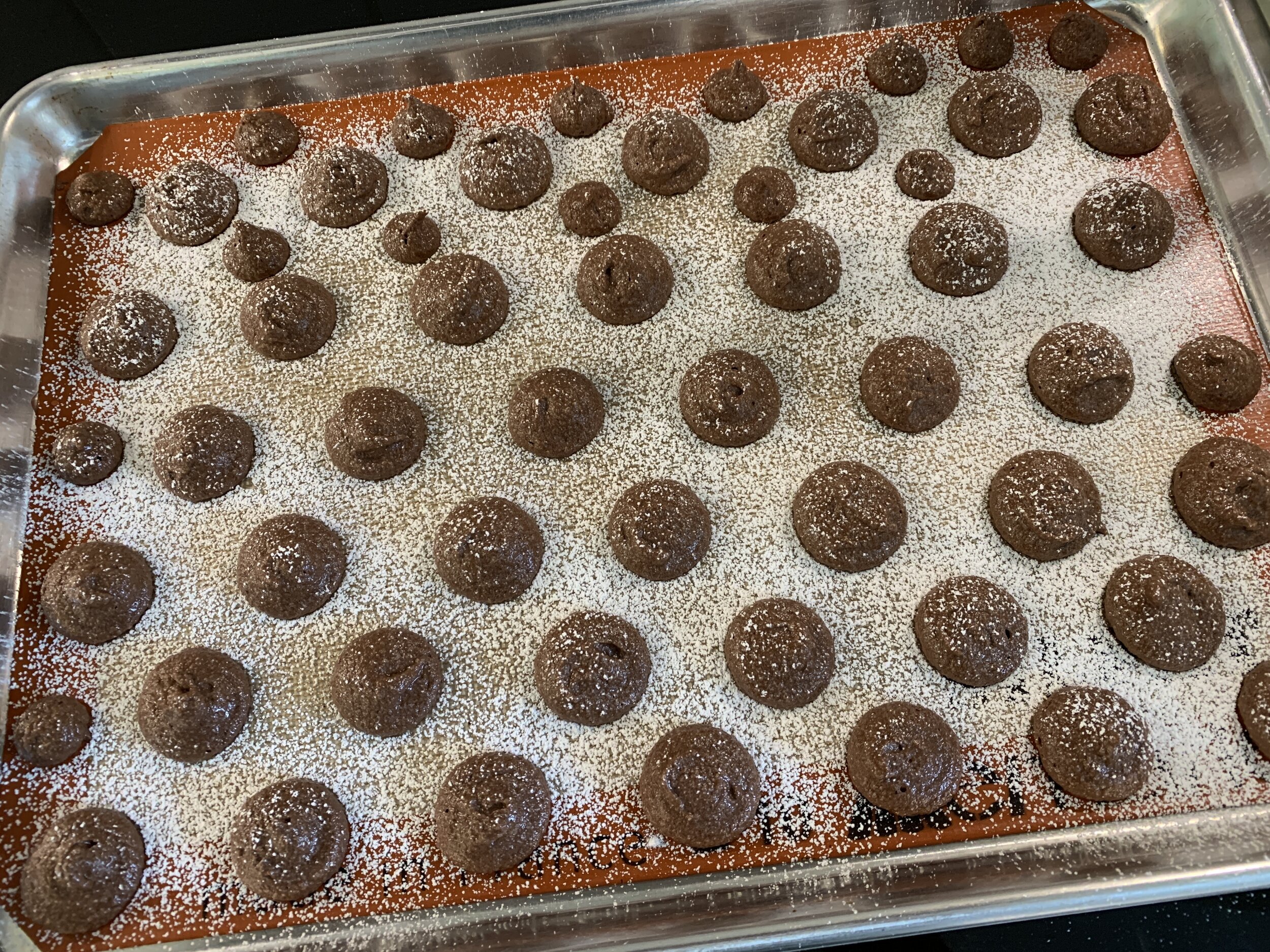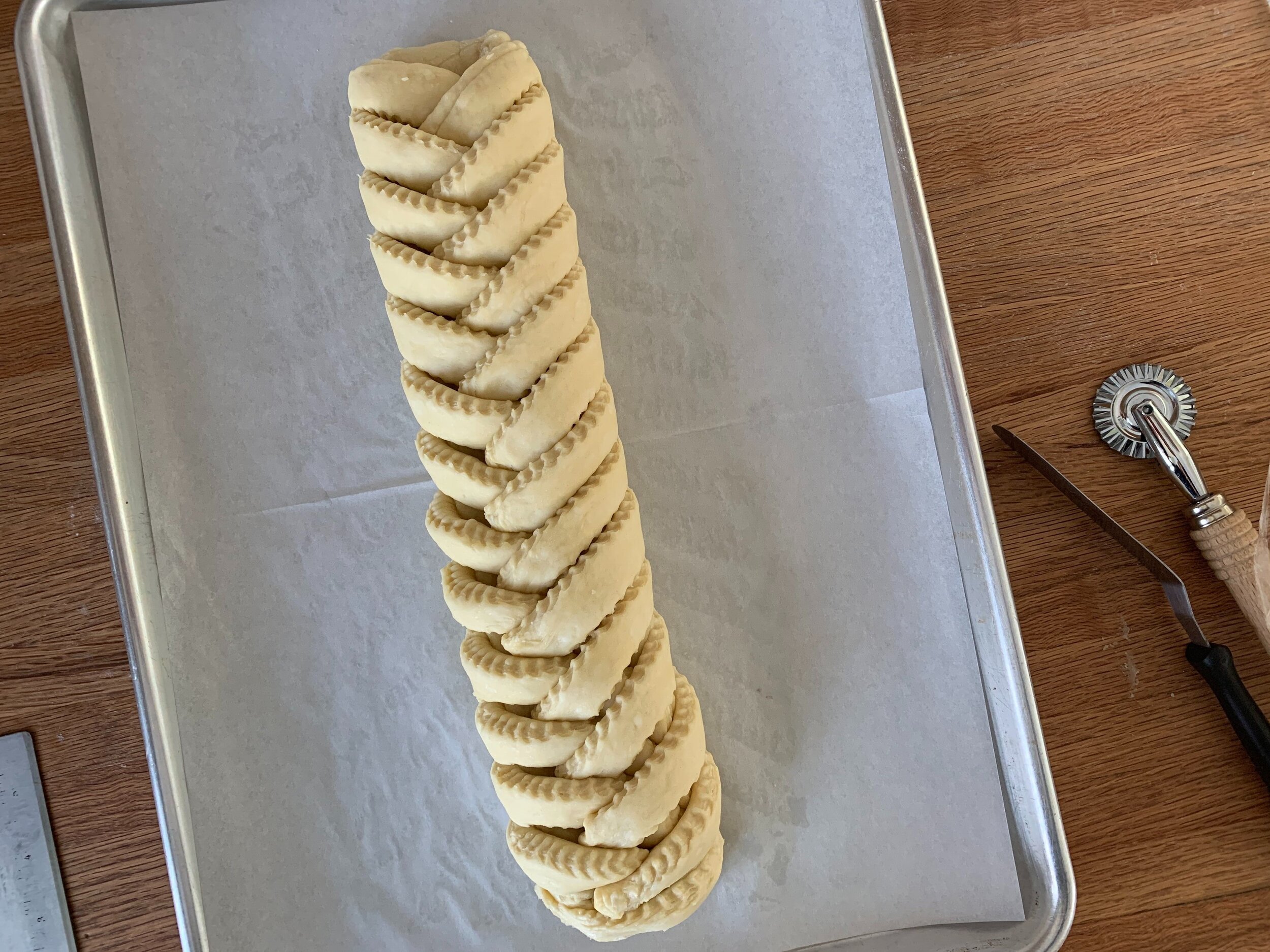Strawberry lime cream stacks with berry sauce
/Oh boy! This one was fun indeed!! Remember the vanilla chocolate dacquoise I wrote about recently? Well, here’s another creation using leftovers and ingredients that needed to be used. This time lime curd from a teacake project, mascarpone (tarte aux fraises fraîches project) and a block of cream cheese just sittin’ in the fridge.
My inspiration often comes from things I happen to have on hand, and let’s be honest - how often do we buy something simply because we have a coupon for it, not knowing exactly what we might do with it? I do! That’s how cream cheese often comes into the equation - good old Philly.
Truth be told, I’m a sucker for custards, particularly baked versions like crème brulée and pots de crème, so I tweaked a ricotta/cream cheese recipe I’ve used a number of times to create a mascarpone version instead. Cue in roasted strawberries and you’ve got yourself something pretty fantastic.
I took advantage of west Michigan’s strawberry season to roast up a bunch and purée them. So tasty in ice cream (yum!) but also to freeze to have on hand for whatever. Here it is quick and dirty - clean, hull, cut up a quart of strawberries into equal pieces. Toss them in 2 tablespoon brown sugar (light or dark, either way), spread out on a silicone mat and bake in a 300ºF oven for 30 to 45 minutes, stirring every 10 minutes or so until juices appear thickened and jammy. Let cool (things will thicken up), then purée.
Where am I going with all this you might ask? OK - cookie base/roasted strawberry mascarpone custard/lime cream/stacked with graham crumbs and caramel/topped with mixed berry sauce. Whoa!
It’s all about planning. The custard/cream can be done ahead and frozen for up to a couple of weeks. The base can be shortbread, meringue or cake depending on your vision. I always have caramel sauce in my fridge and graham or cookie crumbs of various sorts in my freezer.
Lemon or lime curd (just sub in lime juice for lemon) is great for making a citrus cream (2 parts curd to 1 part whipped cream) that can be doled out into silicone molds and frozen until your plan for use starts to take shape. In this case I blended 260 g lime curd with 130 g whipped cream and filled 8 of my favorite muffin shaped wells about 1/2 way. The mold, seen below, is Silikomart’s SF028. My favorite source for this line of molds is Kerekes at Bake Deco.com
I baked my mascarpone custard in the same sized mold (I have several at my disposal!) then cooled and froze the rounds until ready for assembly.
Now for the base. I chose Breton dough for mine, rolling and cutting the rounds a bit larger than the diameter of the molds. Breton dough contains baking powder so the cookies do spread. Just out of the oven, simply trim them up with the same cutter and you have the perfect base on which to set the custard stack. And you can save the crumbs for garnish too!
NOTE: I’d roll the cookies out more thinly next time - although a delicious cookie, it didn’t yield well to a fork. Something flat is best for stacking so a more tender crumbly shortbread or either sponge cake or dacquoise rounds would all work well here.
Let’s assemble! Cookie bases in papers (again for ease of placing on an individual serving plate) and components at the ready . . . . . .
Caramel drizzle topped with strawberry custard. . . . . .
then more caramel drizzle topped with graham crumbs and finished off with lime cream.
All stacked up!
Plan your assembly a few hours ahead of serving to give the custards time to thaw in the fridge. Don’t worry, they’ll hold their shape. Just before serving add whatever garnish you have in mind. I drizzled more caramel and spooned berry sauce over the top with a sprinkling of graham crumbs on the plate.
Delicious all the way around.
News flash! We’re moving into blueberry season - can’t wait!



















































































































































































































































